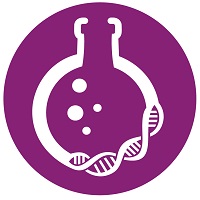Back
Bioanalytics – Chemical
Session: Hot Topic: Fit-For-Purpose
Fit-For-Purpose Metabolite Bioanalysis—A IQ Metabolite Bioanalysis Working Group Biotransformation Perspective
Wednesday, October 19, 2022
3:00 PM – 3:10 PM ET
Location: 153 A
- YL
Yuexia Liang
Principal Scientist
Merck
West Point, Pennsylvania
Hot Topic Speaker(s)
This is the third talk on IQ metabolite bioanalysis symposia. The other two talk IDs are 1250616 and 1250639.
This talk will focus on the understanding of human metabolism facilitating safety assessment of human metabolites. Regulating agencies encourage the pharma industry to perform metabolite identification and demonstrate exposure coverage in the preclinical species early to avoid delays. Regulatory guidance highlights safety concerns arise when exposure of a circulating human metabolite is greater than 10% total drug related material at steady state and emphasizes metabolites circulating disproportionately higher in human than preclinical species should be considered for safety assessment. The pharma industry established the first in human study (FIH) and a preclinical tox species comparison study to provide early safety data on circulating metabolites. The FIH investigation identifies and estimates circulating metabolites, verifies accumulation of metabolites upon repeat dosing, highlights potential reactive and pharmacologically active metabolites, distinguishes metabolites requiring DDI testing, and understand metabolism-based risks to outline future studies. The preclinical species comparison study evaluates exposure coverage of the major circulating human metabolites (> 10% TDRM) in the preclinical species. The study confirms the preclinical species selection or indicates if additional safety studies are required (nonclinical testing with the disproportionate drug metabolite or identification of a different toxicological species). A summary of the regulatory guidance and various strategies for performing human metabolite characterization and safety evaluation will be highlighted along with the vital role of fit-for-purpose bioanalysis and the hADME study.
This talk will focus on the understanding of human metabolism facilitating safety assessment of human metabolites. Regulating agencies encourage the pharma industry to perform metabolite identification and demonstrate exposure coverage in the preclinical species early to avoid delays. Regulatory guidance highlights safety concerns arise when exposure of a circulating human metabolite is greater than 10% total drug related material at steady state and emphasizes metabolites circulating disproportionately higher in human than preclinical species should be considered for safety assessment. The pharma industry established the first in human study (FIH) and a preclinical tox species comparison study to provide early safety data on circulating metabolites. The FIH investigation identifies and estimates circulating metabolites, verifies accumulation of metabolites upon repeat dosing, highlights potential reactive and pharmacologically active metabolites, distinguishes metabolites requiring DDI testing, and understand metabolism-based risks to outline future studies. The preclinical species comparison study evaluates exposure coverage of the major circulating human metabolites (> 10% TDRM) in the preclinical species. The study confirms the preclinical species selection or indicates if additional safety studies are required (nonclinical testing with the disproportionate drug metabolite or identification of a different toxicological species). A summary of the regulatory guidance and various strategies for performing human metabolite characterization and safety evaluation will be highlighted along with the vital role of fit-for-purpose bioanalysis and the hADME study.
Learning Objectives:
- Understand the challenges encountered in the metabolite characterization and bioanalysis in drug development
- Understand the challenges with respect to metabolite related to MIST, DDI, efficacy and/or safety, and associated qualitative and quantitative methodologies
- Reflect on and understand the biotransformation aspects to be considered when determining the level of assay quality in metabolite bioanalysis.


